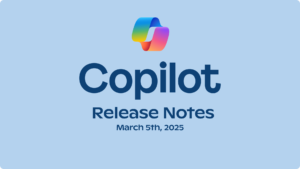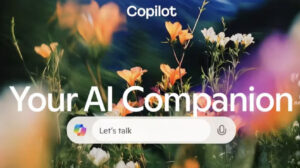Microsoft Copilot Studio Introduces ‘Computer Use’ Feature for AI Agents to Execute Tasks on Web and Desktop Applications

Microsoft Copilot Studio Expands with New Computer Use Feature
Microsoft has recently unveiled a new feature called Computer Use in its Copilot Studio platform. This capability enables AI agents to carry out tasks in both web and desktop applications, simulating human interactions with software.
How Computer Use Works
The Computer Use feature allows AI agents to interact with various software in a way similar to how a human would. This includes actions like clicking buttons, navigating menus, and filling in fields. According to Charles Lamanna, Microsoft’s Corporate Vice President of Business and Industry Copilot, this innovative approach is user-friendly and effectively addresses automation gaps where system APIs may not be adequate.
“AI innovation is accelerating at an unprecedented pace, and Microsoft Copilot Studio is at the forefront,” Lamanna stated. He highlighted that Computer Use is part of a broader set of advancements within the platform, including deep reasoning capabilities, support for model context protocol (MCP), and the general availability of agent flows.
Benefits of Computer Use for Businesses
This new feature significantly increases the potential for businesses to deploy AI across a wider array of software environments. Here are some key advantages:
- Versatility: Agents can now manage various tasks such as data entry and market research, even when external websites do not have developer support.
- Real-time Adaptability: The AI agents can adjust to changes in user interfaces instantly. This ensures that routine updates or redesigns do not disrupt processes.
- Broad Applicability: Unlike previous features such as Actions, which were more consumer-oriented, Computer Use caters to a larger range of enterprise applications.
Comparison with Other AI Frameworks
Microsoft’s Computer Use feature is not alone in the market. It bears similarities to autonomous AI systems from companies like OpenAI and Anthropic. For example, OpenAI’s "Operator" and Anthropic’s "Claude" also have functionalities for managing tasks across different software environments. However, Microsoft distinguishes its offering by incorporating not just browser tools but also desktop applications, expanding the possibilities for enterprise use.
Microsoft’s AI-Powered Services Landscape
The introduction of Computer Use is part of Microsoft’s ongoing commitment to enhancing its suite of AI-driven services. These include:
- Copilot Vision: An AI assistant designed for web browsing that analyzes web content, providing contextual insights and simplifications.
- Researcher and Analyst features in Microsoft 365 Copilot: This tool combines natural language querying with third-party data integration, allowing users to pull in data from various sources efficiently.
- Analyst Feature: This component utilizes OpenAI’s o3-mini reasoning model and supports Python scripting for real-time data queries and visualizations.
Interaction with Microsoft Ecosystem
The Researcher tool merges Microsoft’s AI capabilities with platforms like Salesforce and Confluence, offering powerful search and synthesis functions within existing workplace software. By integrating these advanced features, Microsoft aims to help businesses leverage AI technology more effectively, enhancing productivity and efficiency.
In summary, the new Computer Use capability not only serves to streamline workflows but also underscores Microsoft’s ongoing evolution in the AI sphere, providing enterprises with more tools to navigate their software environments seamlessly and intelligently.





